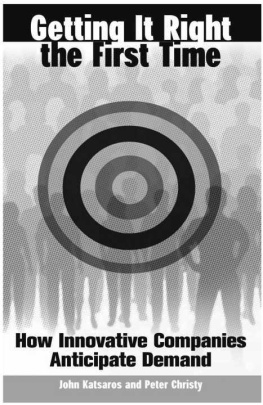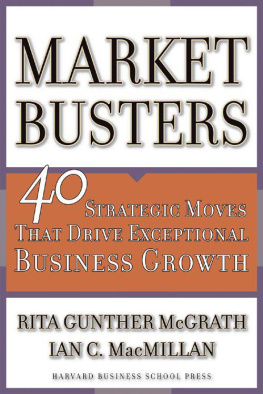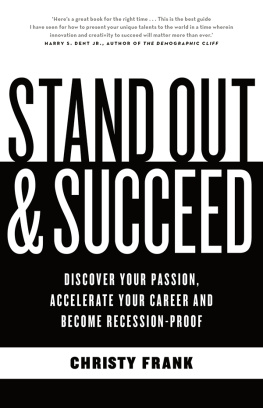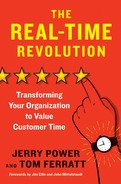Getting It Right the
First Time

Getting It Right the
First Time

How Innovative Companies
Anticipate Demand
John Katsaros and Peter Christy





Contents
Chapter 1
Chapter 2 13
Chapter 3 29
Chapter 4 45
Chapter 5 69
Chapter 6 81
Chapter 7 97
Chapter 8 115
Chapter 9 133
Preface
One of the benefits of working in Silicon Valley is the somewhat regular ritual of cleaning out your desk when you are moving on to a new job. There is nothing close to job security in the high-tech world, and you end up getting real good at starting over. If my dear father, who worked for one company his entire life, had lived to see his son change jobs more often than he changed cars, he would have been appalled. Today the following story seems closer to the truth: someone looking for a new job after twenty years with a prestigious computer company is told, "I like your background but I don't understand why you'd work for those guys for so long. There most be something wrong with you."
About twenty-five years ago, while cleaning out my desk when leaving one of my first marketing jobs, I clearly remember finding a sales lead listing from one of the early trade shows that we had attended to introduce a new product. I was struck by the fact that stuck in among a couple of hundred names on that list were names of people that I was quite familiar with because they eventually became our customers. In fact, most of our biggest customers' names were on that list. At the time I thought it interesting, but odd. If only we knew then what we knew now, selling directly to the names on this list would have saved us years of marketing time and lots of advertising money.
A few years later, while I was once again cleaning out my desk from a sales assignment the same thing happened. I found a list of names from an early trade show and-you guessed it-scattered throughout this list were the names of our most important customers. And, of course, the same thoughts crossed through my mind-what if we had just zeroed right into this list instead of scattering our marketing and sales efforts across a much wider universe only to find that our core constituency was right here in front of us all the time?
As they say, some things come in threes. The third time this happened I was in a company that was in a somewhat different position. Our company was nearly out of money. Before I had arrived there, the company had gone through several rounds of venture capital funding to develop its core technology without ever figuring out just what its product should be. With barely enough money to keep our engineering team together for a year, and after having disappointed investors through several funding rounds, we needed a new idea-fast. Instead of building the next great thing and seeing who would buy it (something the company had tried and failed to do already), why not put the process in reverse and find out what the heck it was that the initial group of people expressing interest in our core technology wanted in the first place. It was not so much about listening to what customers wanted since we did not have any real customers anyway and the technology that we were working on was only half-baked. I set out to crawl through a set of discussions with an eclectic group of individuals representing ultimate customers, other vendors, competitors, researchers-anyone who had expressed an interest in the technology-to find some common threads that would allow a company like ours to weave into a product idea. The results were fantastic in that we were able to find ourselves, our product, and ultimately our market. The really good news is that the company succeeded in launching a product that was a big success and eventually took the company public. The really bad news is that due to investor impatience, the ultimate beneficiaries of our success would be others. Nevertheless, I took away an understanding of something that is a sort of missing link in high tech-the ability to use research to improve and refine a business strategy.
It was not long after I left that last experience that I started the company that eventually became known as the Internet Research Group. Although it took several years to figure out what I was trying to do, what we eventually came up with was a business that combined market and technology research with strategic business planning. It took the better part of ten years to find out that a process I had been using to do research, something that we now call Expert Interviews, was, in fact, a potent process for exploring market opportunities that had not yet developed. Expert Interviews are a blend of sales and marketing because it uses a sales process-a situational analysis type discussion-to develop an overall picture of an incubating opportunity and a marketing process-profiling and categorizing clusters of business opportunities-to understand the strategic possibilities.
Although most of the high-tech world ignores it, market research is a huge business. If you worked at Pepsi, you would never think of introducing a new product without having lots of good focus-group session evidence confirming your strategies. If you are running a political campaign, you spend hours researching polling data before you finalize your media buy. If you are bringing a major motion picture to market, you gather lots of research including audience exit surveys from "sneak previews" as you develop your strategic plan. If you are managing a mutual fund, again, research is key to helping improve your odds. Research is not only a big business-it is a fundamental part the strategic planning process.
Why is it then that, in our world of high tech, research is dismissed as being irrelevant or that it barely exists at all? It is not because of lack of money. Entrepreneurs proposing new business opportunities to venture capitalists are asking for tens of millions of dollars in start-up funding. If they really wanted to spend some money on research in support of the development of their business plan they would only have to say something like, "Hey, Conrad (or Blair or whatever), I know that you're writing us a check for $25M but I need a little more because I actually want to do a little research to help improve my business strategy, is that OK?" The answer would, of course, be "Sure, go right ahead." The ultimate affect on the dilution of their founding stock would be inconsequential, but the ultimate affect on the value of that business would be extraordinary.
The simple answer that we have for why high-tech companies do not do much research in parallel with their strategic planning is that there is a long tradition in high tech of the "engineer turned entrepreneur"-the guy with a vision who figures it all out on his own. That might have been true for Bill Hewlett and Dave Packard who were starting their company in the days when Nixon was running for president talking about his "silent majority" (AKA unpolled masses). But the world has changed since then. Clinton would not have become president had he not figured what the polling data was saying. Likewise, the potential for success in high-tech ventures in today's markets can be vastly influenced by market input.
Next page

















